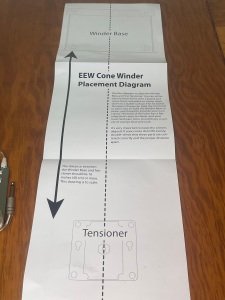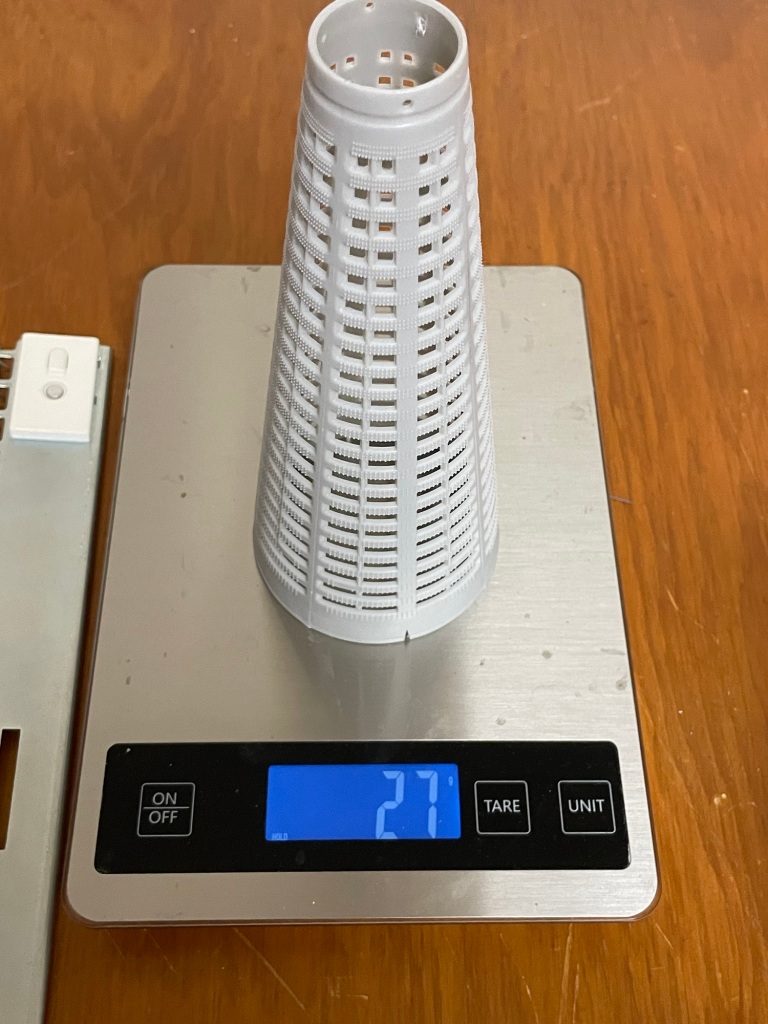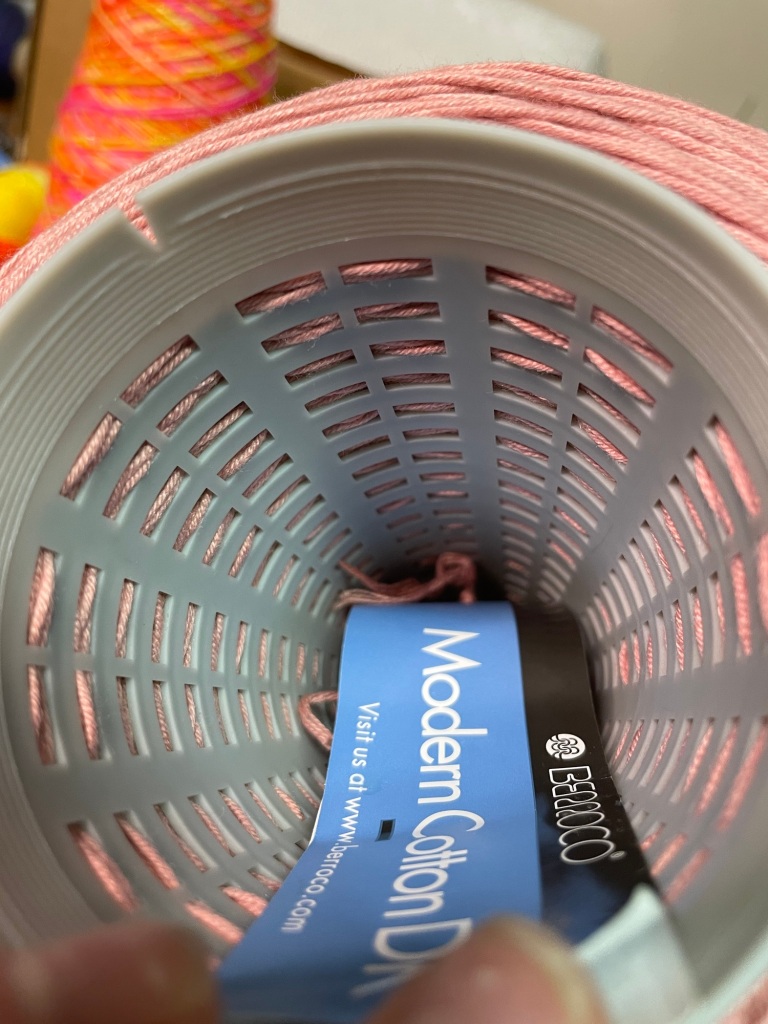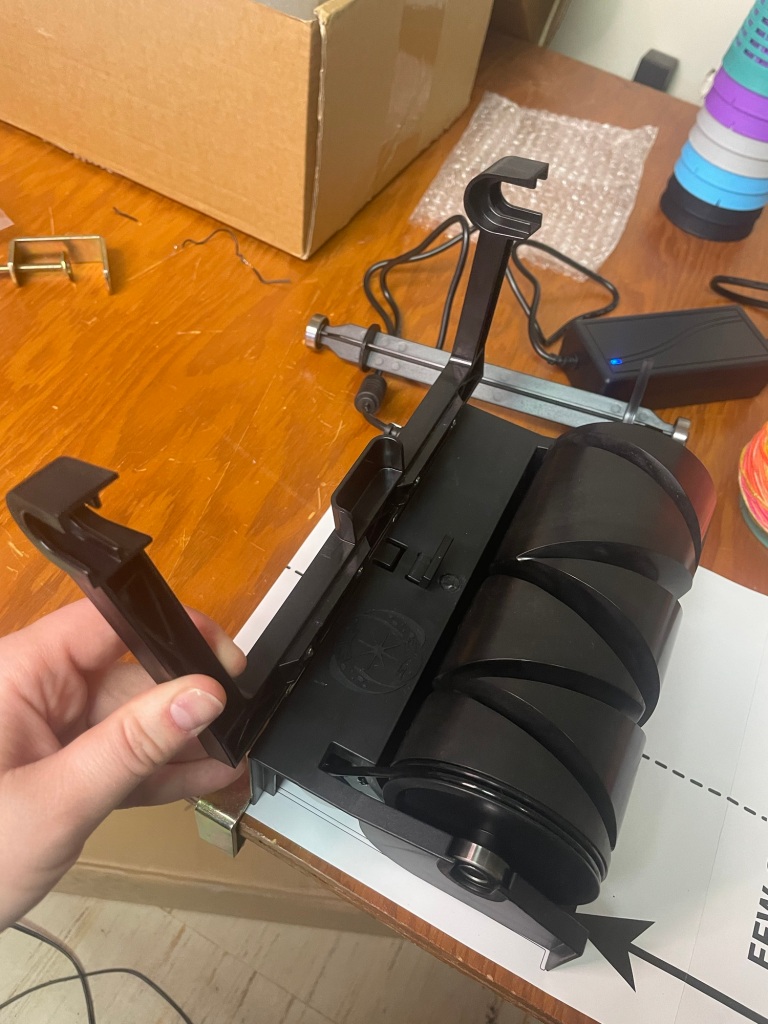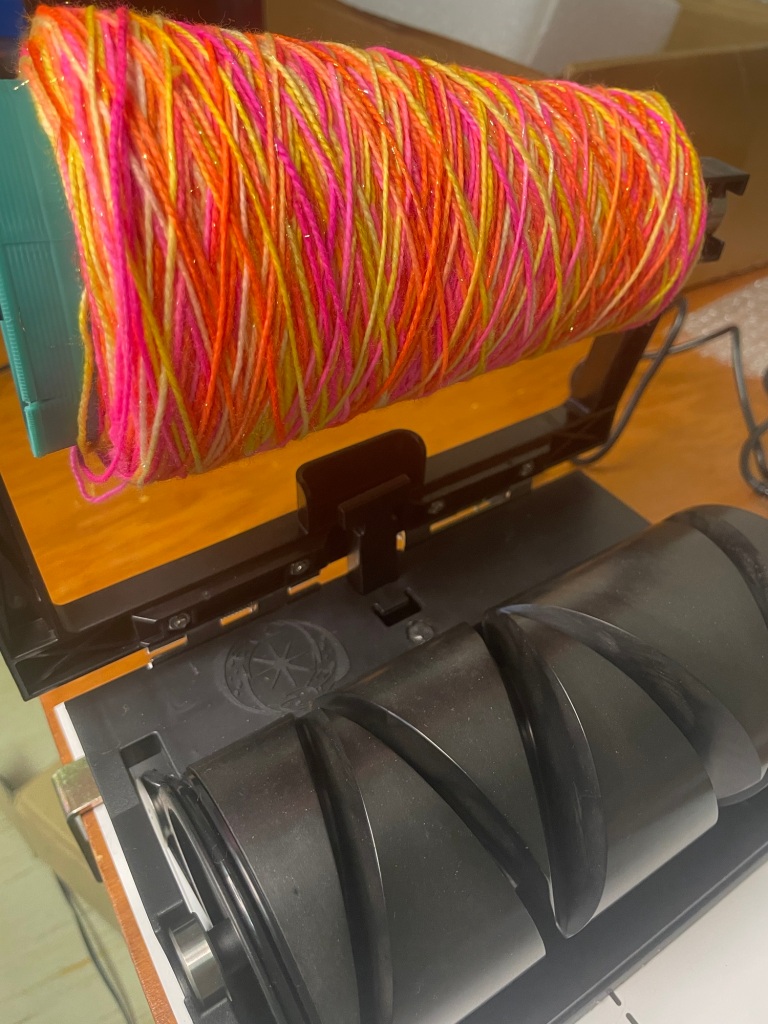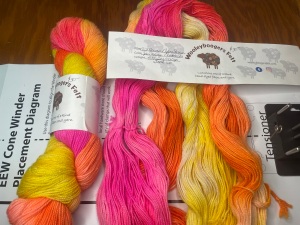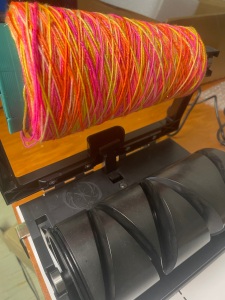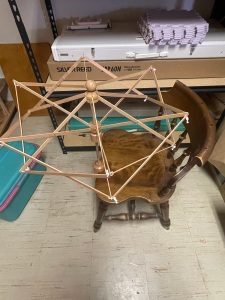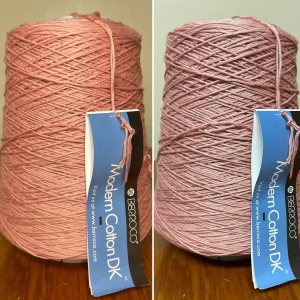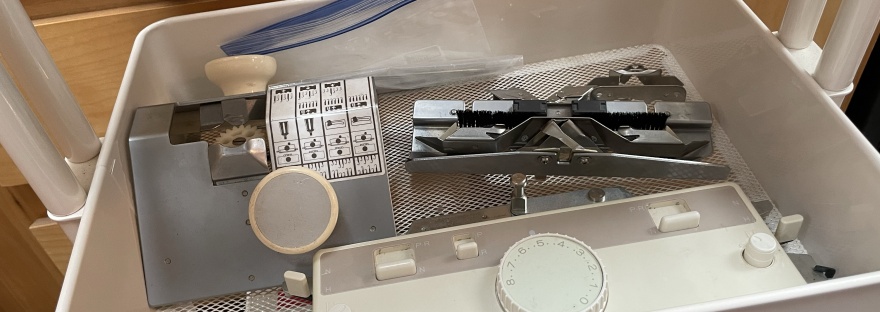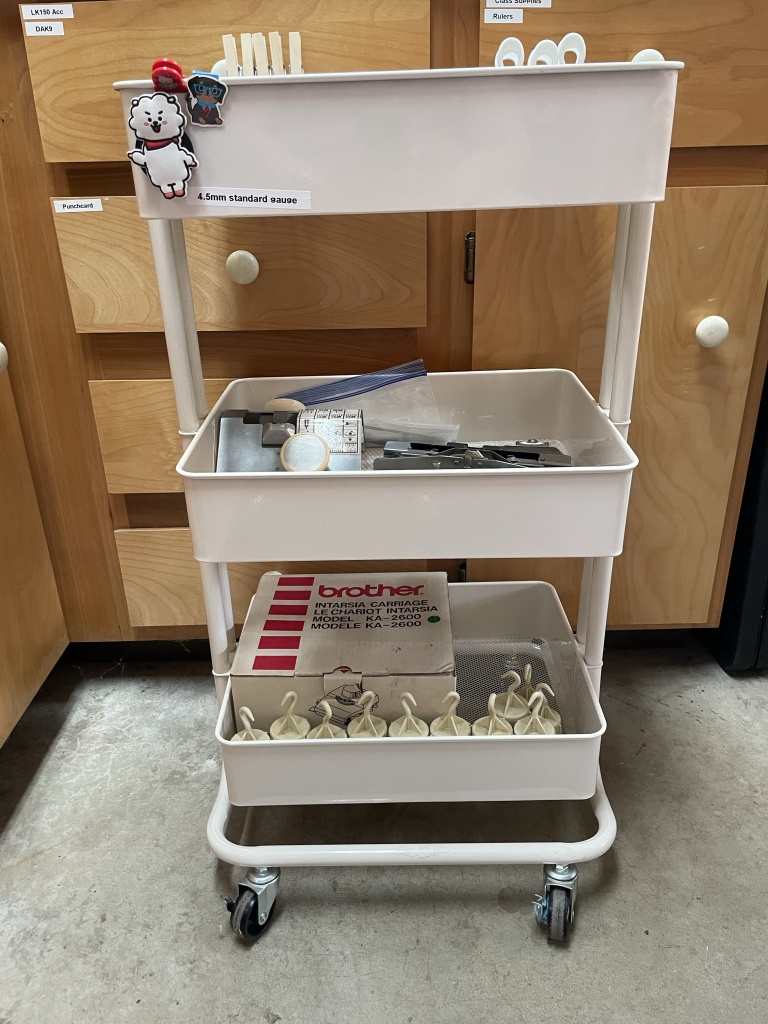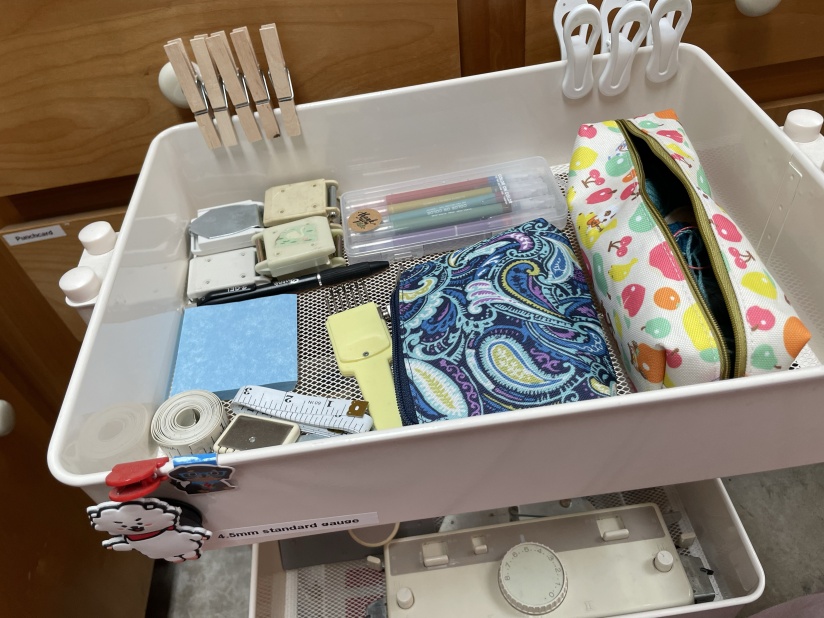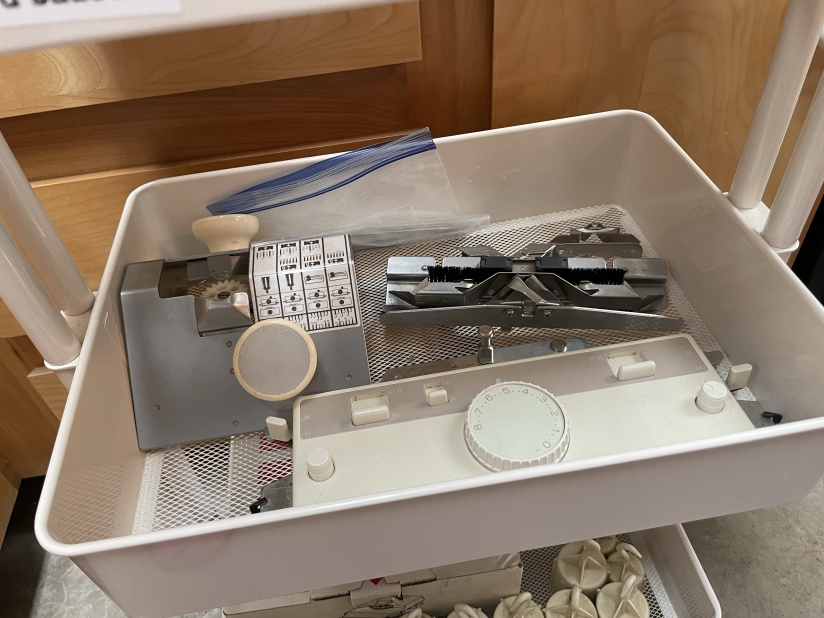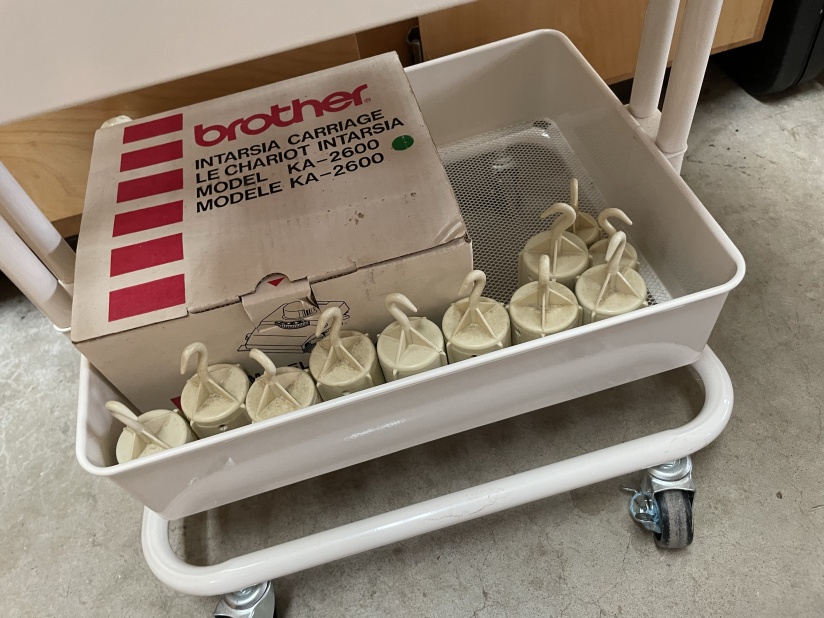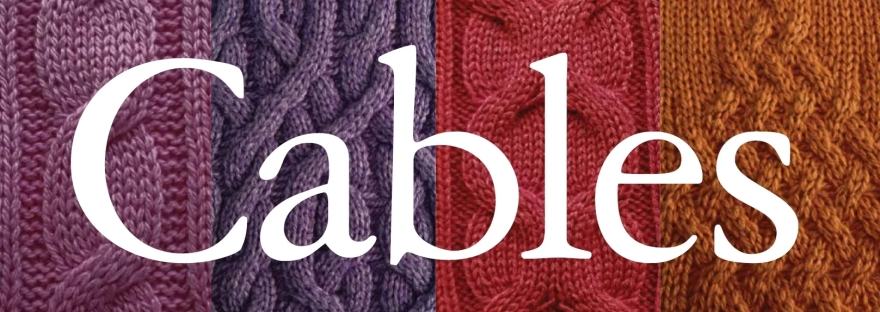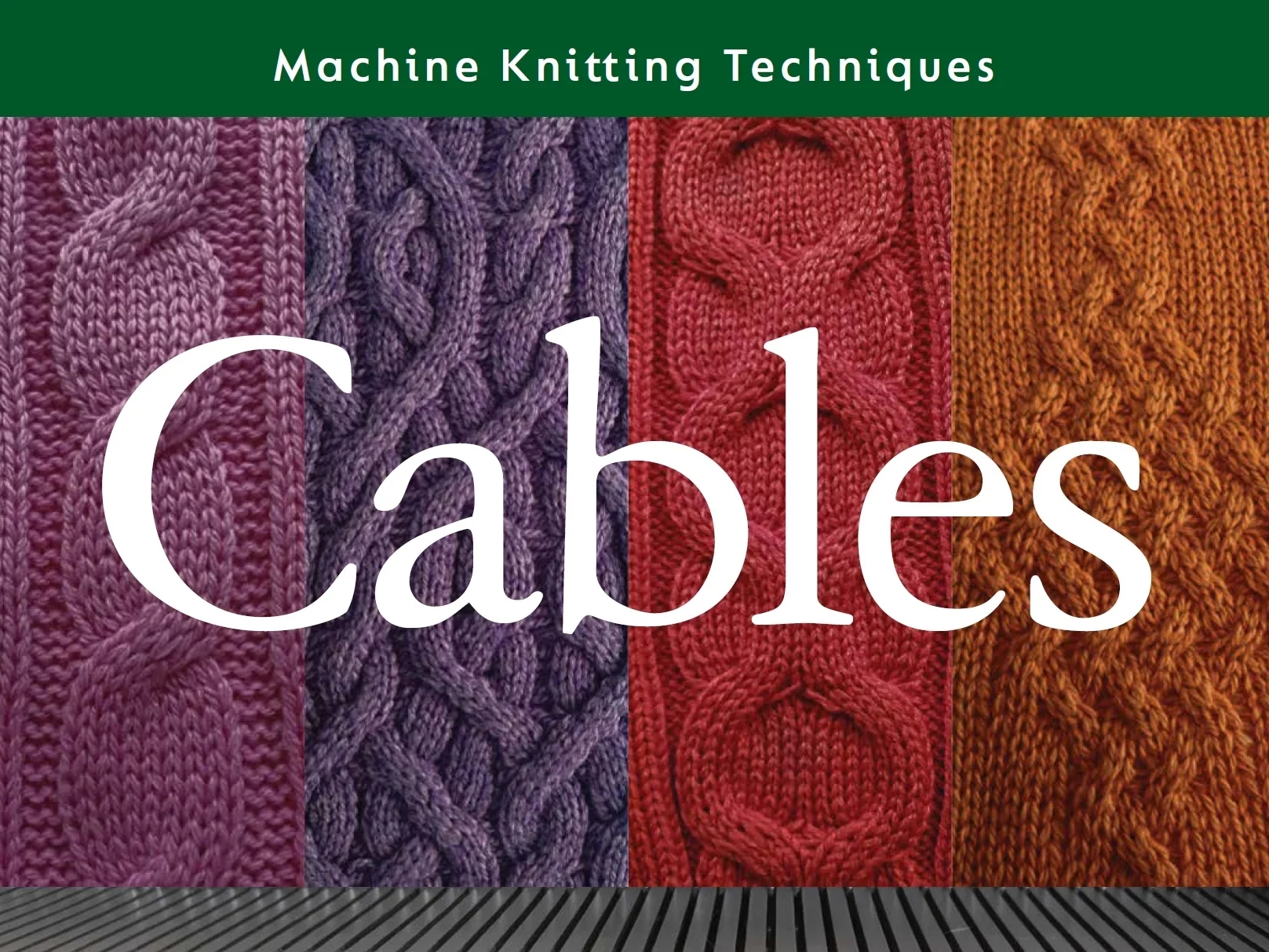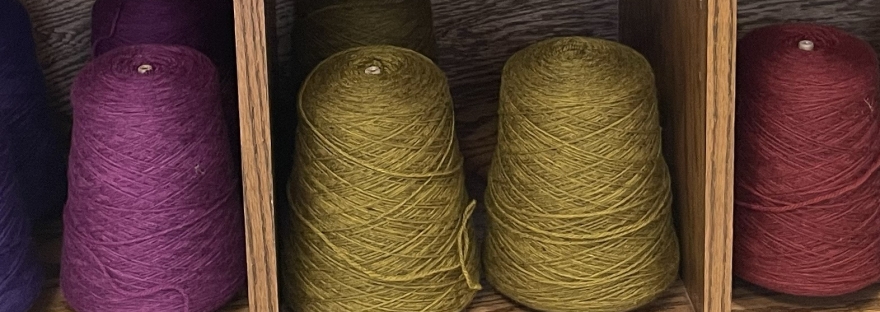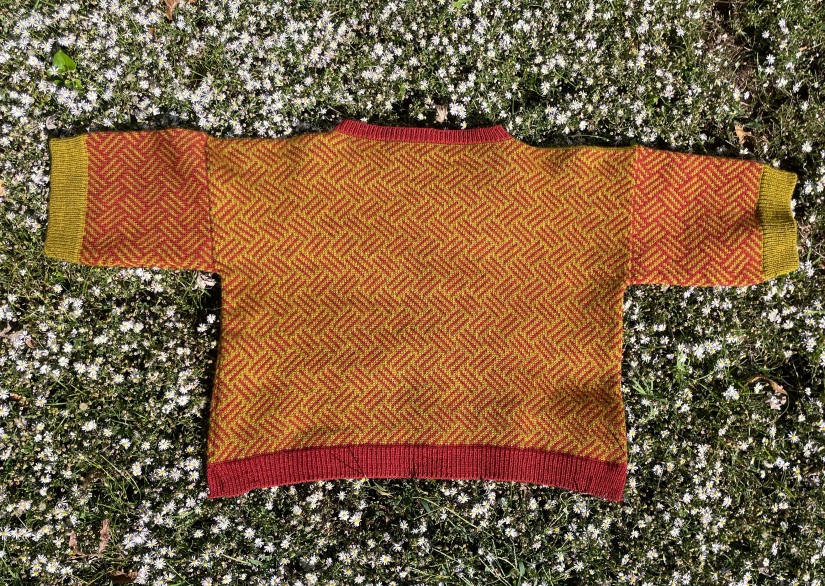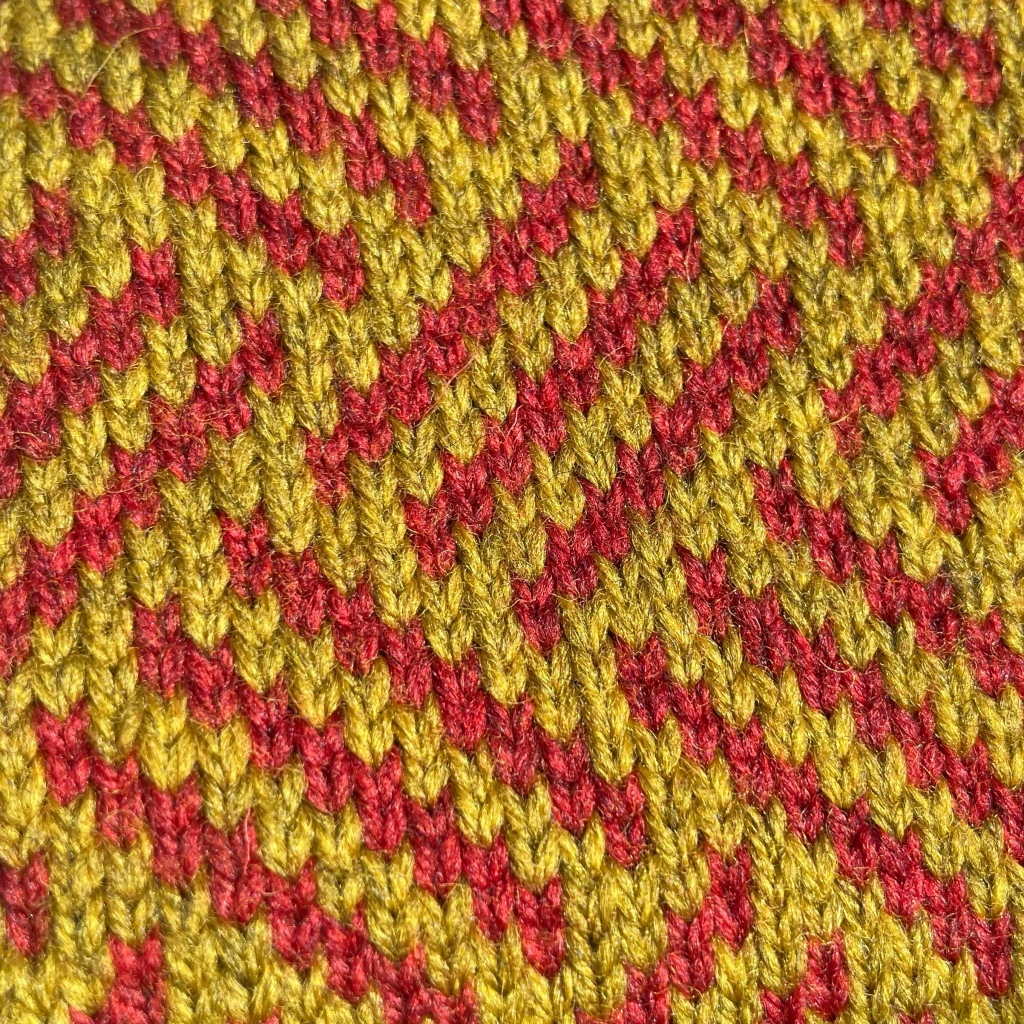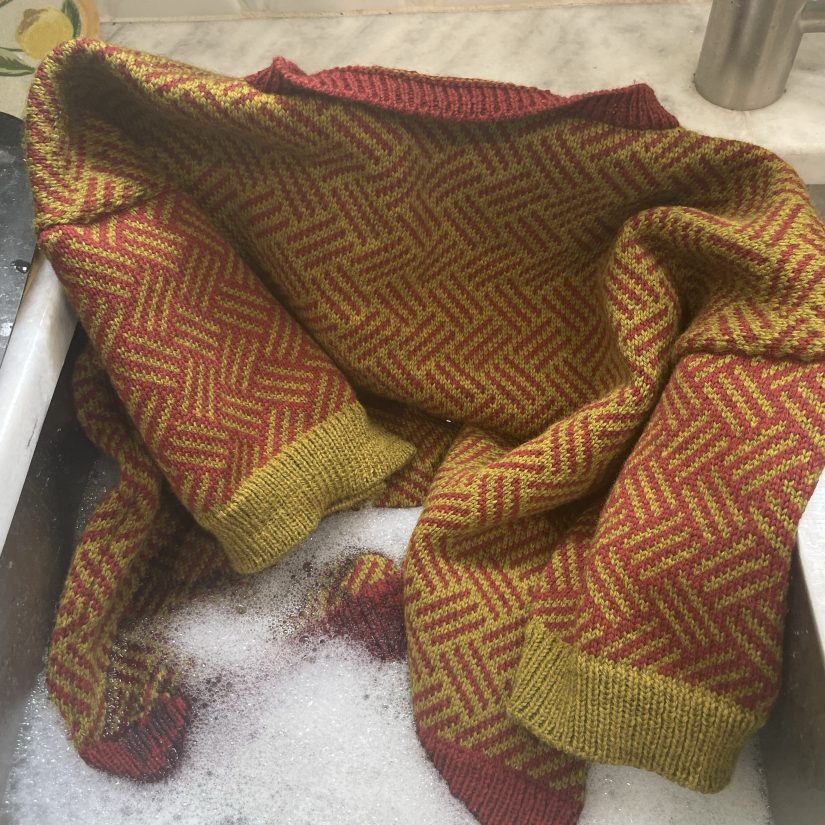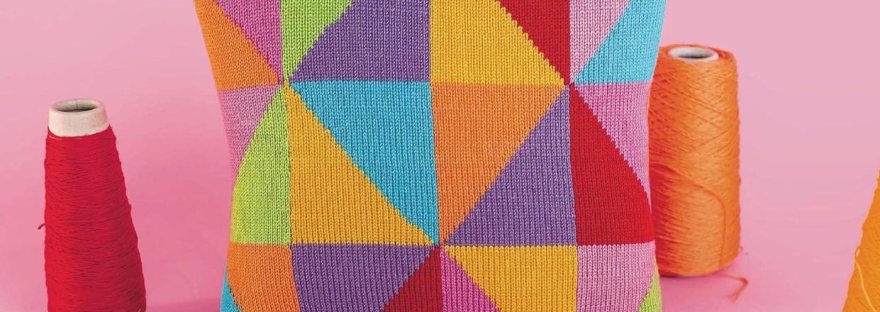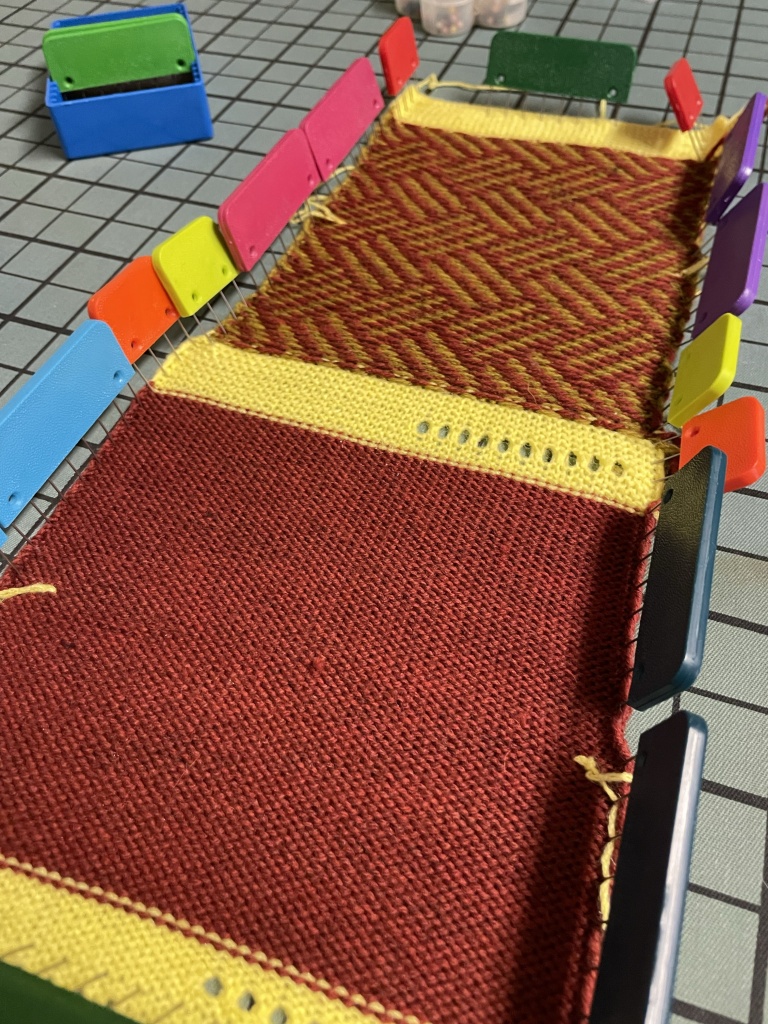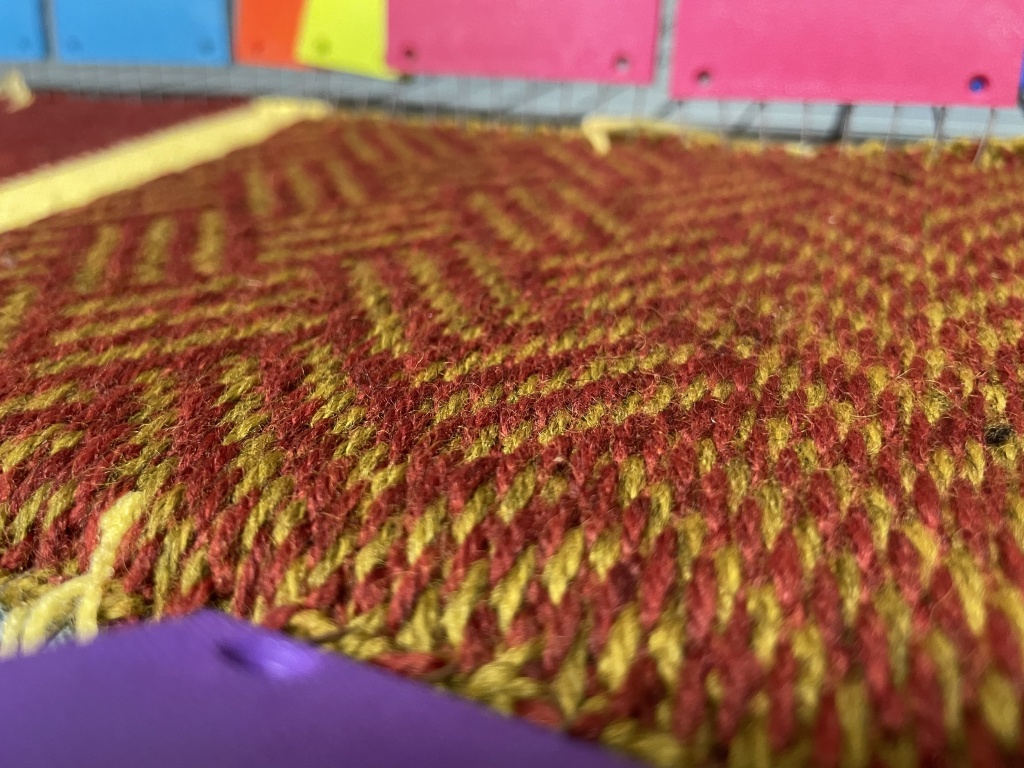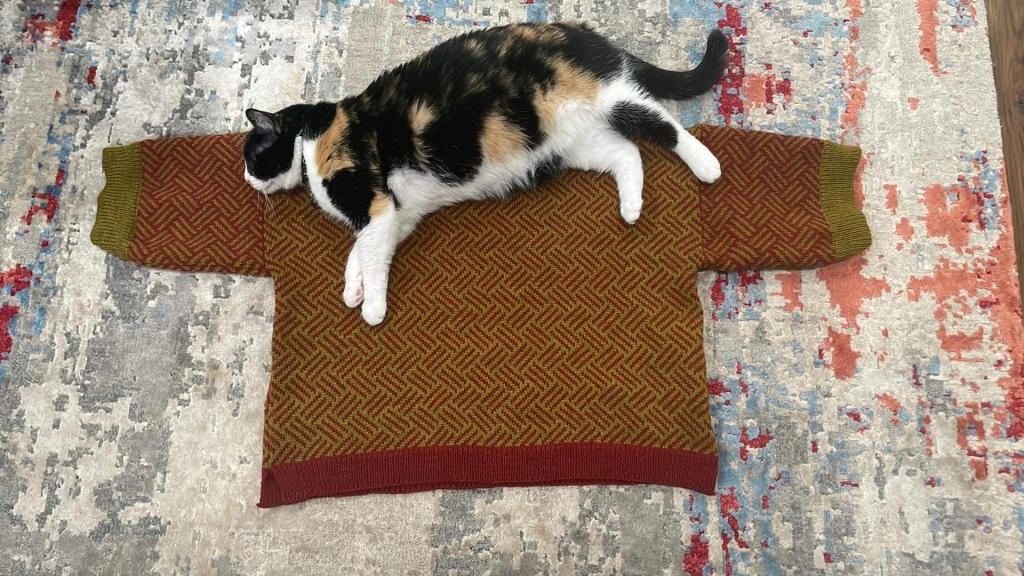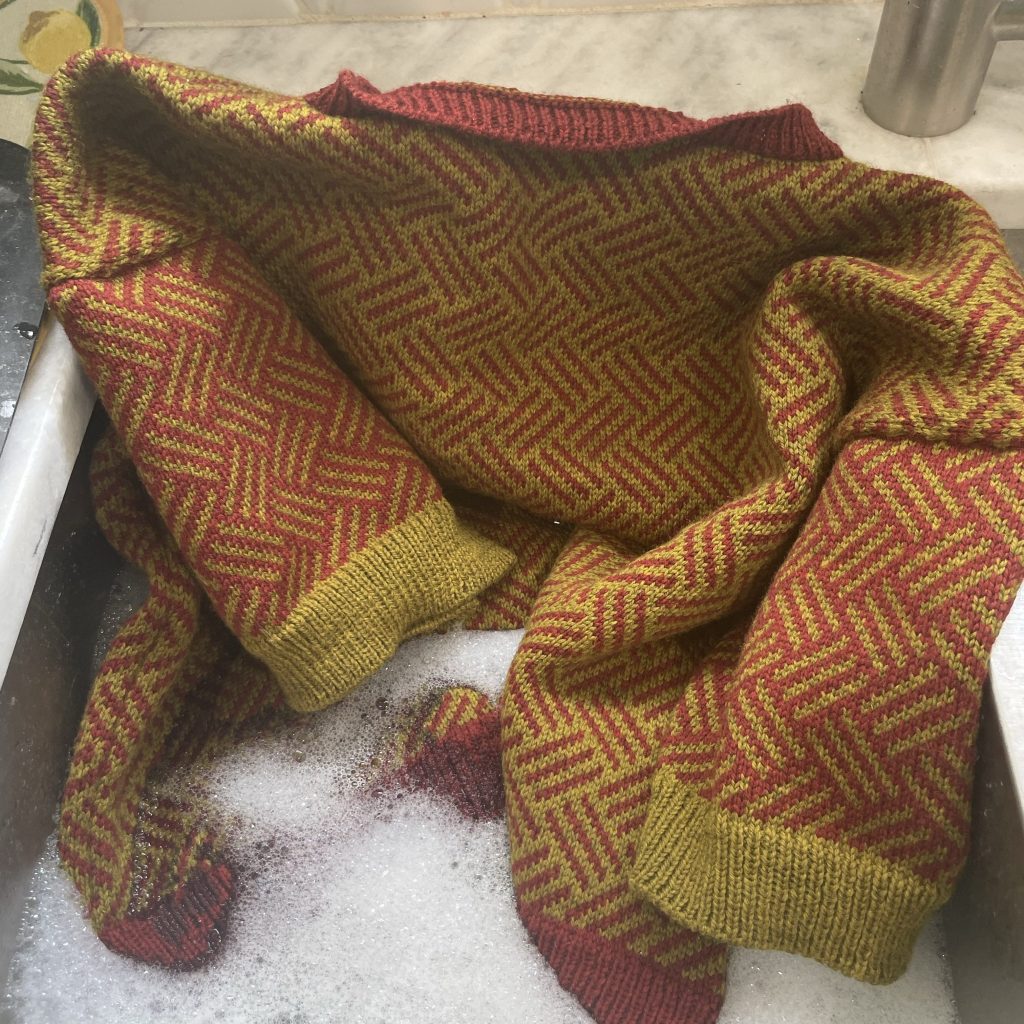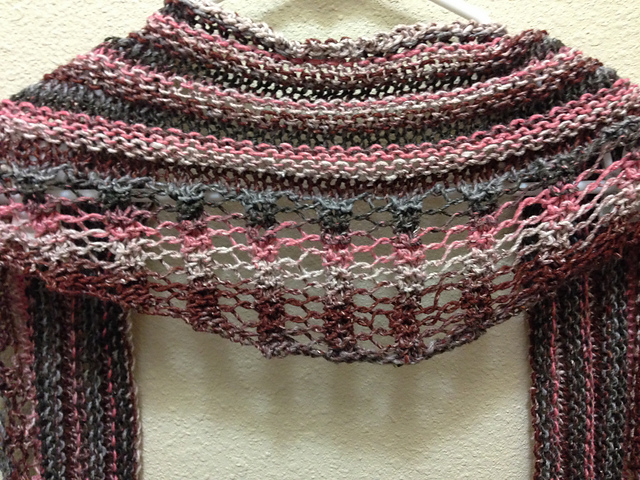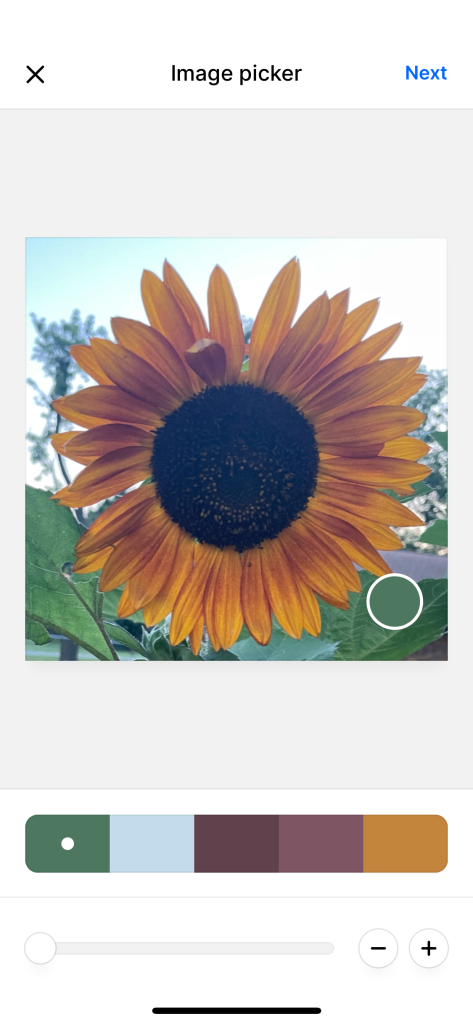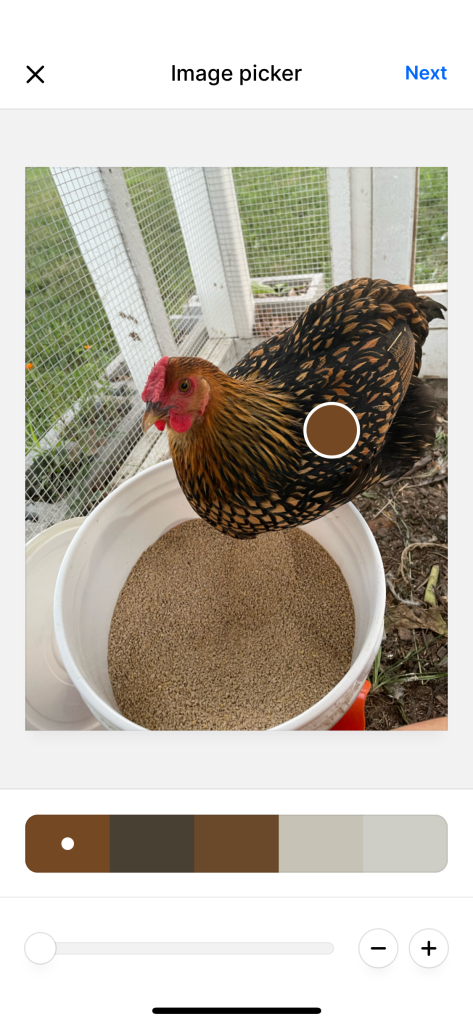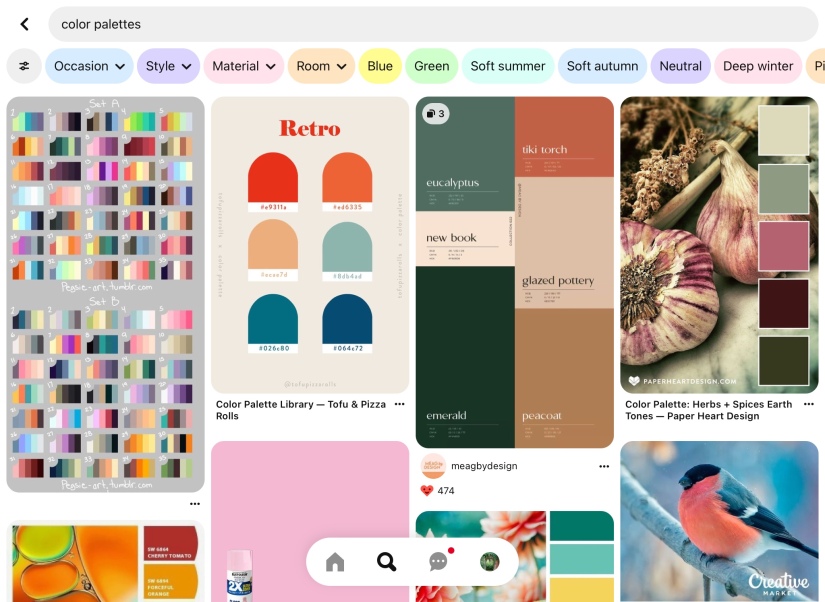I don’t know many machine knitters who have just one knitting machine. After all, there are three common gauges (4.5mm standard, 6.5mm, mid-gauge, and 9mm bulky) that knit different yarn sizes. It’s wonderful if you’re fortunate enough to have the space to leave all three sizes of machines set up, but that’s not the reality for everyone.
So what’s the best way to store your knitting machine? Options vary, but there are some definite musts for storage.
Between Projects
If you plan to leave your machine set up while you aren’t using it, you should cover it with a sheet or table cloth to protect it from dust.
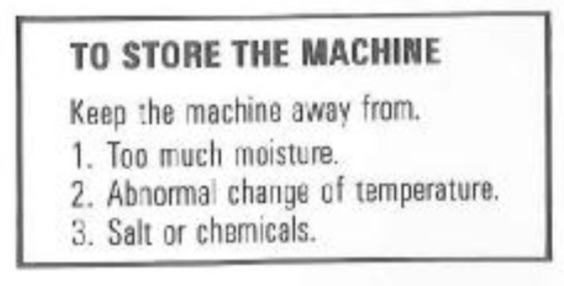
Storage Musts
Climate Control is a must. Plastic beds and parts can become brittle if exposed to temperature extremes. Freeze/thaw and extreme heat can also damage the machine’s metal parts. Prevent warping by storing your machine in a climate controlled environment.

In addition to temperature, you should pay attention to humidity. Metal needles can rust open or shut. Sometimes extensive cleaning can save old needles with superficial rust, but uneven needle surfaces can snag yarn, and it’s generally not worth the time and trouble to try to save them.
Prevent rust and buildup by only storing a clean machine. Excess oils and lubricants can build up and eventually gunk up your machine’s moving parts. They also attract dust.
You should consider removing your sponge bar and running a long cat-tail cleaning brush through the channel to catch and remove fiber buildup from the machine. You should remove needles to make sure the brush doesn’t get stuck in the channel, so you might prefer to do this step for long term storage only. Removing the sponge bar also prevents any degraded sponge from falling apart in the machine, but hopefully you won’t be storing your machine quite that long!

Keep Your Boxes
If you have the box your machine arrived in, keep it! Even if your machine comes with a lid and is its own case, keeping the box can prevent dust buildup on the case.
I’ve had to scrub some interesting mystery substances off of the outside of knitting machine cases. A little extra protection can’t hurt.
Machines Without a Box
If your machine does not come with a built-in case lid and you do not have a box, you have a few options.
Rifle cases are often long enough to store a knitting machine bed or a ribber. If you choose to go this route, be sure to measure all dimensions of your machine-length, width, height, and depth, before purchasing a case.
If you lack a box and don’t like the idea of a gun case, you can always build your own box. Big box stores that carry large appliances, appliance specialty stores, and furniture shops often have excess boxes and are happy to give them to you at no charge if you call and politely request some. This option can use quite a bit of tape to secure the box’s shape, but your machine will be secure in its custom box.
Where to Store Your Machine
Your machine is clean and safely tucked away in its box, but where do you put it? Many machine knitters store their machines under a bed or in the back of a closet. If you plan to lift and store your machine on a high shelf, be sure to ask for help. Metal bed machines weigh around 40lbs and can be unwieldy to lift because of their length.
If you prefer to build or buy a shelving unit, be sure to check that it can support the weight of your machines. I bought a heavy duty garage shelving unit with wood shelves for my studio that can support up to 400lbs per shelf. Some less expensive, wire rack storage units are the same size but support much less weight, so make sure to check the manufacturer’s specs before hefting your machine onto any old shelving unit.
What’s Wrong With This Picture?

My garage shelving unit can hold all of these machines, but there are still a few issues here. Make sure that your machines and accessories aren’t hanging off the shelves when you store them. (Don’t worry, things were safely stored right after this picture.)
Rumor or Warping Hazard?
The bottom shelves in the picture have machines stored with the case handle and latches pointed upward. I’ve read in multiple forums online and seen warnings in social media groups that storing machines latches up as opposed to latches stored facing horizontally can warp the knitting machine bed.
That’s scary! Can you work on a warped bed?
I read through the manuals of many different models from Brother, Toyota, and Silver Reed, but I didn’t see any notes about machine orientation in storage.
I contacted Knitcraft, the importer of Silver Reed knitting machines in the United States who I’m also a Silver Reed dealer through, and they had this to say:
We have not heard of any issues with warping. Maybe if you have a lot of heat with the LK[150] it could possibly bend standing straight up, but we have not had any of that happen here.
We would suggest lightly wiping [the machine] down with oil and keep the lid on the metal bed machines. Do not store in a spot that can get rusty or frozen or exposed to light. Best places to keep them are in a closet away from the elements. For the LK 150 it would be optimal to store it back in the original box it came in. If leaving up on a table, drape a tablecloth over the machine to keep dust off.
Knitcraft
Have you ever had a bed warp from storing it latch side up? Please let me know! I’ve read the warnings but not seen any actual accounts or pictures of warping from side storage.
If you are concerned about any potential warping, store your machine laying flat as if it were in use. I have traveled with my machines with the latch and handle facing up, but I place them flat for long-term storage. That rumor did make me worry even though those at Knitcraft have not heard of any warping actually happening.
What Improper Storage Can Do
I have a Brother KH 260 knitting machine with a warped bed. It was passed along to me in that condition since I’m teaching myself to fix machines, but that is one of many things I don’t yet know how to address in machine repair.
I don’t know what caused that machine to warp, but I do know it was stored in an attic for many years after its original owner passed away. You can see my attempt to clean it in this post from a couple years ago. I ended up deciding to keep the machine for parts instead of continuing with a restoration.
That machine could still knit stockinette stitch, but I do a lot more than that in my knitting. The punch card unit is cracked and doesn’t function, so I couldn’t test how it worked. Hand selected patterning kind of worked, but only after I removed a lot of oil residue from the carriage and reinstalled some missing springs.
So that’s it-a knitting machine might still function fine with a warped bed, but I never got past stockinette due to other damaged parts. It’s a shame to see a once-loved machine become scrap due to storage, especially a vintage machine that isn’t in production anymore. Some vintage machine brands have dupes so you can buy brand new parts that will work, but the parts aren’t necessarily the same quality as the originals. That lovely Brother KH260 is just back up scrap parts due to improper storage.
Protect your vintage knitting machines by storing them properly in a climate controlled place!

How do you store your knitting machine? Let me know in the comments, especially if you have any experience with a bed warping over time!
Thoughts and suggestions for what you’d like to see articles on can go down in the comments or through the contact form!
Thanks for coming on this machine knitting journey with me! If you like what you see and want to help me bring more machine knitting content, please consider supporting me on Ko-fi.
https://storage.ko-fi.com/cdn/widget/Widget_2.jskofiwidget2.init(‘Support Me on Ko-fi’, ‘#29abe0’, ‘J3J45DOLK’);kofiwidget2.draw();




